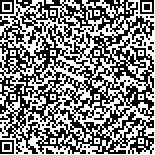下载中心
优秀审稿专家
优秀论文
相关链接
摘要

面向国家粮食安全的重大战略需求,1998年中国科学院建立了“中国农情遥感速报系统”(CropWatch),持续运行20年后,现已发展成为“全球农情遥感速报系统”(CropWatch)。本文重点论述了2013年建立参与式全球农情遥感监测云平台(CropWatch-Cloud)以来,所采用的农情监测体系、可定制的农情监测云平台理念以及CropWatch-Cloud在国内外的应用推广情况,介绍了技术方法与农情信息服务方式的创新与进步带来的国际影响力的提升。系统总结了全球农情遥感速报系统发展的农情监测指标、农情预警能力、作物长势综合监测方法以及众源数据支持的作物面积监测方法,论文进一步阐述了CropWatch未来的发展方向,借助众源地理信息、大数据技术等的发展,打通从地块—村—镇—县—市—省—国家—全球的体系化全链条监测,满足从农户到政府决策部门对农情信息的差异化需求。
The Chinese Academy of Sciences has launched a Chinese remote sensing-based agriculture monitoring system (called CropWatch) in 1998 to provide agriculture information for supporting national food security strategies. CropWatch has provided operational bulletins and has been upgraded to a global agriculture monitoring system, which is unique and uses remote sensing data as the major data source. This study systematically summarizes the development of CropWatch in terms of agricultural monitoring approach/methodology and matrix, system platform, and agricultural information dissemination since 2013. This study emphasizes the innovative agricultural monitoring approach and matrix and pioneering customizable agricultural monitoring system since the establishment of the CropWatch participatory global agricultural monitoring cloud platform (CropWatch-Cloud). A hierarchical approach is adopted by CropWatch, in which a four-tier monitoring strategy, namely, global (sixty-five Crop Monitoring and Reporting Units, MRU), regional (seven Major Production Zones, MPZ), national (31 key countries), and subnational (subdivisions of nine large countries), is developed. CropWatch indicators/matrix can be divided into four categories, namely, CropWatch agroclimatic, arable land use intensity, crop condition, and crop production indicators. Four temporal and spatial resolutions of indicators adapted to each scale are used in CropWatch bulletin. Using the outputs on the four levels, a synthesis of crop condition and production estimates for four major crops is published in the CropWatch bulletin. In situ measurements, local experience, and knowledge are essential to upgrading and improving the robustness of the indicators, methodologies, and algorithms in the CropWatch system. Furthermore, acquiring valuable information outside China, in addition to the global information collection, is challenging. Recently, geotagged data from the crowd or from search engines, such as Google, have revealed interesting scientific trends and have been confirmed as an effective and costless means for data collection, that is, the ability to characterize crop planting dates, or training and validation samples for cropland mapping. External application promotion at home and abroad is emphasized. With the development of CropWatch Cloud, data analysis and reporting are feasible from any location in the world through the Internet. This technology provides unique opportunities to countries requiring work on crop monitoring but currently lack sufficient resources. The innovative approach of the participatory CropWatch-Cloud platform makes this technology an influential agricultural monitoring system. In terms of the originality and innovation of CropWatch, four items are systematically summarized from a methodological perspective. These items are (1) six unique remote sensing-based indicators for an agricultural assessment, (2) advances of early-warning capability, (3) integrated crop condition assessment methods that consider the advantages of six methods, and (4) the innovative crop area estimation method supported by crowd-sourcing data. This study expects the future development of CropWatch. The CropWatch team will leverage CropWatch based on the development of volunteered geographic information acquisition and big Earth data technology to provide agricultural information from the global scale for policy making to the field scale for farm management.

